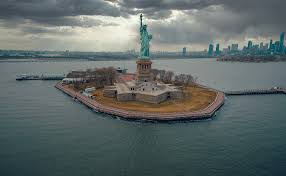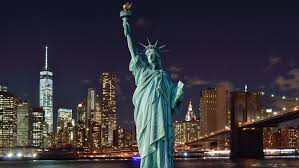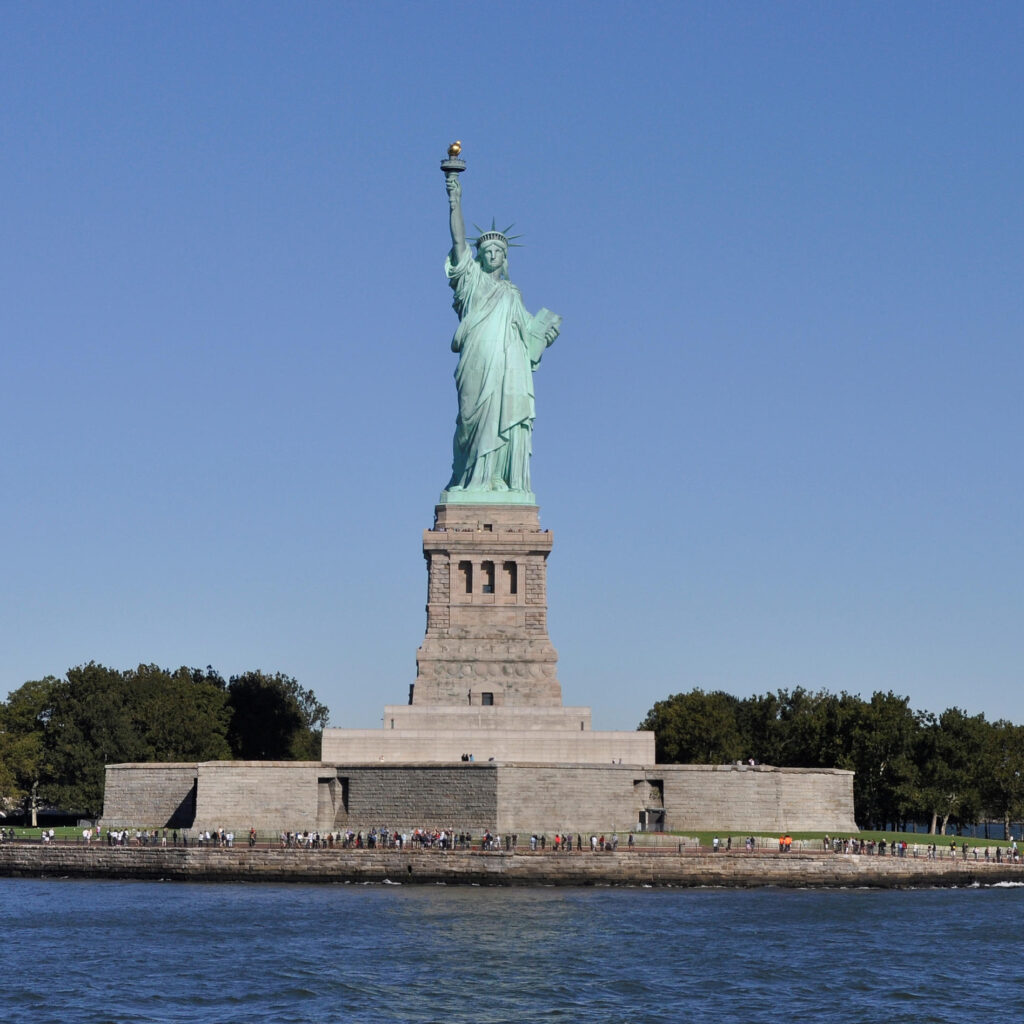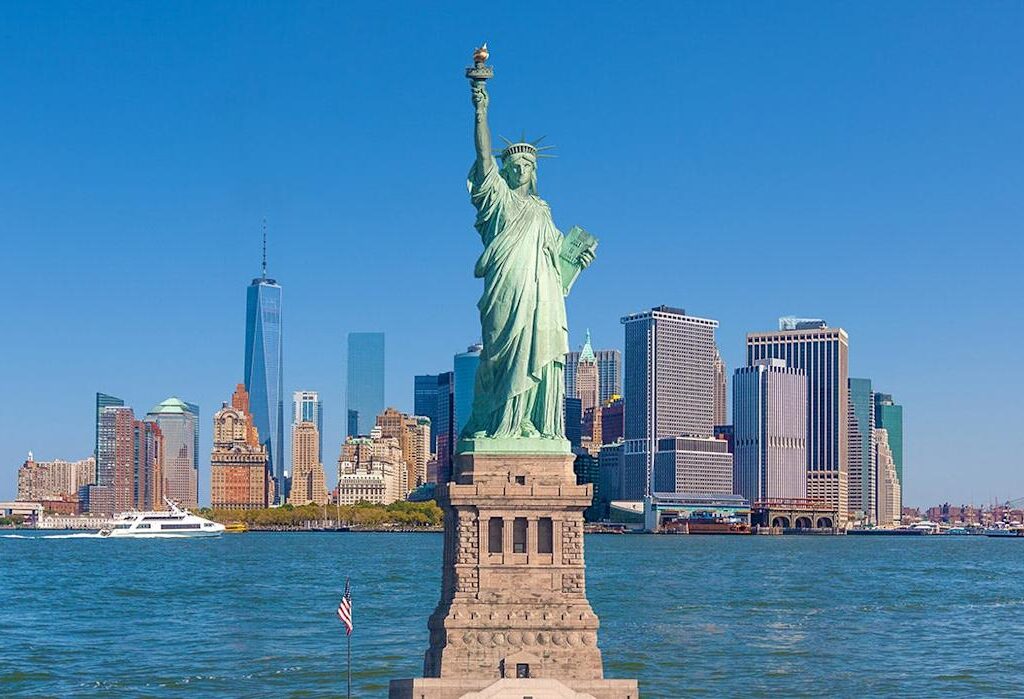Standing proudly on Liberty Island in New York Harbor, the Statue of Liberty is one of the most recognizable symbols of the United States. Gifted to the country by France in 1886, this towering monument represents freedom, democracy, and the enduring spirit of hope. More than just a statue, it has become a beacon for millions of immigrants who arrived in America seeking a better life and a symbol of the ideals of liberty that have shaped the nation’s identity.
The History and Significance of the Statue

The idea of the Statue of Liberty was born out of a desire to commemorate the centennial of American independence and to celebrate the enduring friendship between France and the United States. The statue was designed by French sculptor Frédéric Auguste Bartholdi, and its metal framework was created by the renowned French engineer Gustave Eiffel, famous for designing the Eiffel Tower.
The statue was meant to symbolize the shared ideals of liberty between the two countries. France, in the midst of political upheaval, hoped the gift would represent the principles of freedom and democracy. In contrast, the United States, having just emerged from a brutal Civil War and established itself as a global power, embraced the statue as a symbol of its commitment to freedom and equality.
Construction and Design

The construction of the Statue of Liberty was a monumental effort that spanned several years. The statue itself is 151 feet tall from heel to top of the head, but with the pedestal and foundation, it reaches a total height of 305 feet. Made of copper sheets, it was originally a shiny copper color, but over time, the copper oxidized to the greenish patina that is now so iconic.
The design of the statue is full of symbolic meaning. Lady Liberty is depicted as a robed woman holding a torch in her right hand, symbolizing enlightenment, while a tabula ansata in her left hand carries the date of the U.S. Declaration of Independence, July 4, 1776, in Roman numerals. The broken chains at her feet represent the end of oppression and tyranny. These features all convey the ideals of liberty, freedom, and hope.
The Statue’s Journey to America
Once completed, the statue was disassembled and shipped to the United States in 350 individual pieces. Upon arrival in New York City in 1885, the pieces were reassembled on the newly constructed pedestal on Liberty Island. The unveiling of the statue on October 28, 1886, was a grand event, with thousands of people attending, including dignitaries from both countries. Over the years, the Statue of Liberty became an iconic symbol, welcoming generations of immigrants arriving at Ellis Island just across the water.
Symbolism and Meaning

The Statue of Liberty is more than just a landmark; it is a symbol of freedom and democracy, representing the values on which the United States was built. The statue is closely tied to the history of immigration in the U.S. For millions of people arriving by ship, Lady Liberty was the first sight of the country and a reminder of the opportunities they hoped to find in the land of freedom.
The symbolism of the statue also extends to the torch she holds. It is a beacon of hope for those seeking a better life, a guide to those who feel lost or oppressed. The broken chains at her feet represent the triumph over tyranny and oppression, a powerful image for those escaping persecution and seeking refuge in the United States.
The Statue of Liberty Today

Today, the Statue of Liberty remains an enduring symbol of the ideals of freedom, democracy, and hope. It is one of the most visited tourist destinations in the United States, drawing millions of visitors each year. The monument has also been designated as a UNESCO World Heritage Site, ensuring its preservation for future generations.
The statue continues to be a place of reflection and inspiration. It serves as a reminder of the values that the U.S. was built upon and continues to aspire to. Additionally, the Statue of Liberty National Monument now includes Ellis Island, which housed the immigration station from 1892 to 1954. For many, the Statue of Liberty and Ellis Island together serve as a tribute to the immigrant experience in America.
Recent Renovations and Preservation Efforts

In recent years, there have been several efforts to preserve and maintain the Statue of Liberty. The statue has undergone various renovations, including work on its interior and structural reinforcement. In 1984, the Statue of Liberty-Ellis Island Foundation launched a major fundraising campaign to restore the statue and its pedestal, culminating in the reopening of the monument on July 4, 1986, for its centennial celebration.
The National Park Service, which now manages the monument, continues to oversee preservation efforts, ensuring that the statue remains a safe and inspiring place for visitors. Additionally, the museum on Liberty Island offers educational exhibits on the history and symbolism of the statue, as well as the immigration experience in the United States.
The Statue’s Cultural Impact

The Statue of Liberty has not only influenced American culture but has had a global impact as well. The symbol of liberty it represents has inspired movements around the world, and it has appeared in countless works of art, literature, and film. Its image has been used in political movements, protest campaigns, and as a beacon of hope during times of crisis.
The statue’s influence extends beyond the United States. As a symbol of freedom and hope, it has inspired people across the globe fighting for civil rights, democracy, and liberty. It has been used as an emblem by oppressed people worldwide, symbolizing the power of resistance and the pursuit of justice.
Conclusion
The Statue of Liberty is not only one of the most famous landmarks in the United States but also one of the most significant symbols of freedom, democracy, and hope in the world. Its history, from its conception in France to its placement in New York Harbor, reflects the enduring ideals of liberty that have defined the United States for over two centuries. Today, as it stands tall in the harbor, the statue continues to inspire millions, welcoming visitors from all walks of life and serving as a reminder of the nation’s foundational principles.
As a symbol, the Statue of Liberty transcends borders and continues to represent the shared values of liberty and freedom that connect people across the globe.
Author Profile
- Syed Tahir Abbas is a Master's student at Southwest University, Chongqing, specializing in international relations and sustainable development. His research focuses on U.S.-China diplomacy, global geopolitics, and the role of education in shaping international policies. Syed has contributed to academic discussions on political dynamics, economic growth, and sustainable energy, aiming to offer fresh insights into global affairs.
Latest entries
 Japanese PoliticsSeptember 6, 2025Prince Hisahito’s Coming-of-Age and Japan’s Male-Only Succession Dilemma
Japanese PoliticsSeptember 6, 2025Prince Hisahito’s Coming-of-Age and Japan’s Male-Only Succession Dilemma GeopoliticsAugust 23, 2025Previewing the White House Visit of South Korean President Lee Jae Myung
GeopoliticsAugust 23, 2025Previewing the White House Visit of South Korean President Lee Jae Myung Middle East ConflictJuly 22, 2025Israel’s Deadly Attacks on Gaza: A Dire Humanitarian Crisis and International Calls for a Truce
Middle East ConflictJuly 22, 2025Israel’s Deadly Attacks on Gaza: A Dire Humanitarian Crisis and International Calls for a Truce Middle East & North AfricaJuly 20, 2025Israel Targets Damascus Amid Rising Tensions in Syria
Middle East & North AfricaJuly 20, 2025Israel Targets Damascus Amid Rising Tensions in Syria


